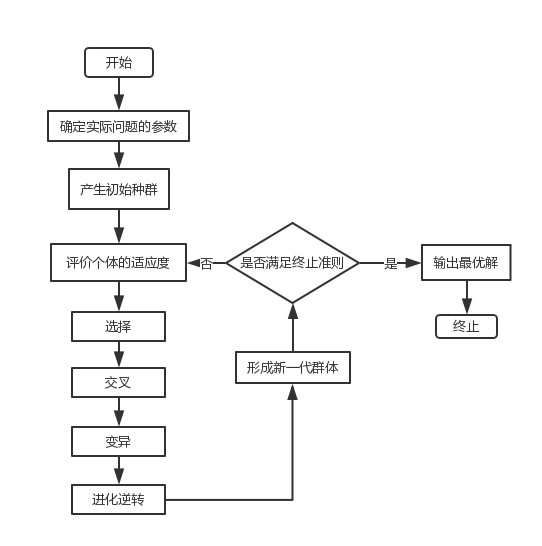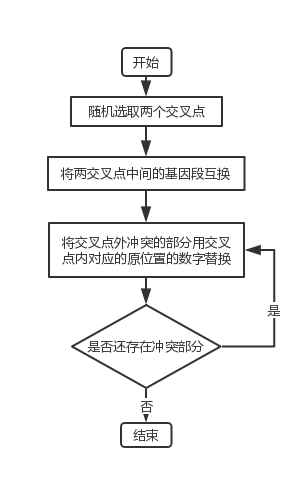共享单车使用现状调查与统计分析—以南京市为例毕业论文
2020-07-08 21:51:17
摘 要
2014年,四名北大毕业生在大学校园内推出了ofo,标志着共享单车的诞生,当时这一想法只是为了解决大学生的出行问题,但经过这几年的发展,共享单车已经逐渐走出校园,成为日常生活之中不可缺少的一部分,在现有的城市公共交通之间起到润滑的作用。
几年井喷式的发展使得共享单车行业日趋成熟,但与此同时,共享单车的野蛮生长也带来了巨大的社会问题。大量共享单车企业的涌入导致行业发展混乱,一些地区共享单车的过度投放、废弃的共享单车堆积如山、企业与企业之间时常出现的恶意竞争、共享单车的押金问题、共享单车车辆的无序或违规停放、车辆的恶意损坏……种种问题给企业、用户和城市管理者带来了巨大的挑战。
本文首先介绍了共享单车的相关背景,包括了国内外共享单车的发展史、国内外有关共享单车的研究现状以及笔者对共享单车和共享经济之间关系的一些看法。紧接着,以南京市为例,通过调查问卷的方式对共享单车的使用现状进行调查研究,分析共享单车发展过程中存在的问题,针对这些问题提出了相应的解决方法或者有效的建议。其次,针对当今社会比较关注的共享单车最优布局的问题进行详细探讨,将该问题分为共享单车停车点的选址和共享单车调度的路径规划两个部分,第一部分采用层次分析法的方式;第二部分采用多目标规划,结合遗传算法。通过数值仿真,分别给出了可行的优化模型。通过模型的建立,给管理者提供一个布局参考。最后,综合所有的研究,对共享单车的未来提出了自己的一些看法或建议。
关键词:共享单车;统计分析;最优布局;遗传算法
Survey and statistical analysis of the use of shared bicycles
Taking Nanjing as an example
Abstract
In 2014, four graduates from Peking University launched the ofo on the university campus, which marked the birth of a shared bicycle. At that time, the idea was only to solve the problem of college students’ travel. However, after several years of development, shared bicycles have gradually come out of the campus, It has become an indispensable part of daily life and played a role of lubrication between the existing urban public transportation.
Years of blowout development has made the shared bicycle industry mature, but at the same time, the savage growth of shared bicycles has also brought huge social problems. The influx of a large number of shared bicycle companies has caused chaos in the industry, the over-distribution of shared bicycles in some areas, the accumulation of abandoned shared bicycles, the frequent malicious competition between companies, the issue of deposits for shared bicycles, the uncontrolled or illegal parking of shared bicycles, the malicious damage to the vehicles……Various problems have brought huge challenges to companies, users and city managers.
This article first introduced the background of shared bicycles, including the history of the development of shared bicycles at home and abroad, the current research status of shared bicycles at home and abroad and the author's views on the relationship between shared bicycles and the sharing economy. Then, taking Nanjing as an example, study the status of shared bicycles through questionnaires, analyze the problems in the development of shared bicycles and propose some effective suggestions. Next, we discussed the optimal distribution of shared bicycles. This problem is divided into two parts: the location of shared bicycle parking spots and the path planning of shared bicycles. In the first part, we used the method of AHP. In the second part, we adopted the multi-objective planning and combined genetic algorithms. Through numerical simulation, we presented their feasible optimization models. Through the establishment of the model, we provided managers with a layout reference. At last, combining all the studies, the author put forward some opinions or suggestions about the future of shared bicycles.
Keywords: Shared bicycles; Statistical analysis; Optimal layout; Genetic algorithm
目录
摘要 I
Abstract II
目录 III
第一章 绪论 1
1.1研究背景 1
1.2研究目的 1
1.3研究思路 2
第二章 共享单车的相关介绍 3
2.1国内外共享单车的发展历程 3
2.1.1国外发展历程 3
2.1.2国内发展历程 3
2.2国内外有关共享单车的研究现状 4
2.3共享单车和共享经济 4
第三章 共享单车使用现状的统计分析 6
3.1统计调查 6
3.2基本统计信息 6
3.3具体调查分析 6
3.3.1共享单车地区发展趋势 6
3.3.2共享单车整体满意度 7
3.3.3促进共享单车发展的优势 7
3.3.4限制共享单车发展的问题 8
3.3.5共享单车未来的展望 10
3.4共享单车发展建议 10
3.4.1政府发挥主导作用 10
3.4.2企业遵守行业规范,提高自身责任意识 11
3.4.3加强用户的法治建设,提高用户的思想道德素质 11
第四章 共享单车的最优布局 12
4.1共享单车停车点的选址 12
4.1.1层次分析法和共享单车 12
4.1.2层次分析法的基本步骤 12
4.1.3层次分析法的建立 13
4.1.4模拟共享单车停车点的选取 19
4.2共享单车调度的路径优化 20
4.2.1多目标规划和共享单车 20
4.2.2模型假设 20
4.2.3模型变量设定 21
4.2.4模型建立 21
4.2.5模型归一化处理 22
4.2.6模型求解 23
4.3遗传算法 23
4.3.1遗传算法介绍 23
4.3.2遗传算法流程 23
4.3.3遗传算法构造 24
4.3.4遗传算法具体流程叙述 26
4.3.5数值仿真 26
第五章 结语 29
参考文献 30
附录 31
致谢 39
第一章 绪论
相关图片展示:











